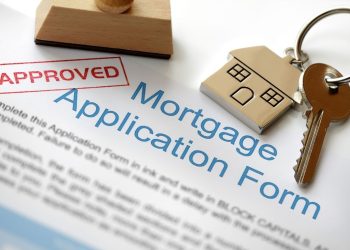By Alison Rice
RISMEDIA, January 26, 2009-A subdued group of economists speaking at the International Builders’ Show in Las Vegas last week agreed on one thing-the housing market will weaken more in 2009.
“My forecast is built upon an imbalance of supply and demand,” said David Crowe, chief economist at the NAHB, who estimates the country currently has more than 1.5 million existing and new homes available for sale or for rent that no one wants or can afford to buy.
Frank Nothaft, chief economist at Freddie Mac, and David Berson, chief economist at The PMI Group, also spoke during the morning press conference.
Such excess inventory-the result of foreclosures and other factors–is hammering builders in specific and the housing market in general as home values slide. (Overbuilding by new-home builders is not a factor in this excess supply, according to Crowe, who said that less than one-third of those 1.5 million excess homes are new. “What builders are facing is an oversupply of homes not entirely of their making,” he said.)
Regardless of the reason, home prices are expected to weaken still more, particularly in major metropolitan areas, according to Berson, who suggested it may take two to three years for the housing market to stabilize. According to a proprietary index developed by PMI, 97 percent of the nation’s metropolitan statistical areas (MSAs) are at risk of having lower home prices in two years than they did in late 2008. For some of the most troubled markets-Riverside-San Bernardino, Calif., and many in Florida-the likelihood of having lower home prices is more than 99 percent.
And the job market will offer little help to builders during that time. According to Crowe’s current forecast, the unemployment rate could rise as high as 8.5% by the end of 2009 before finally beginning to ease in 2010’s second quarter. That bodes ill for the housing market. According to an analysis of loans in Freddie Mac’s own portfolio, the single biggest trigger for a mortgage becoming delinquent is unemployment. “We will see elevated delinquencies on conventional loans to prime borrowers,” Nothaft predicts.
Such trends are affecting consumer confidence, which is at record lows. People “are afraid to go out and purchase anything of major importance, and clearly that would include a home,” Crowe said. Such anxiety is widespread, even among otherwise financially secure Americans. “Because buying a home is such a big financial decision, a person doesn’t have to be unemployed ; a person just has to worry about being unemployed.”
For those who have the money, job, credit, and nerve to buy, mortgage rates are at historic lows: 4.96 percent for a conforming, 30-year, fixed-rate loan. “That’s about the only good news about the mortgage market these days,” Nothaft quipped.
As a result of these factors and others, Crowe predicts builders will sell just 420,000 homes this year, with the low point for sale activity coming in the first quarter of 2009, when NAHB’s forecast estimates new-home sales to fall to a seasonally adjusted annual rate of 380,000. Residential construction is likely to hit its bottom in 2009’s second quarter, when starts dive to a level of 620,000 for overall housing and 430,000 for single-family.
Alison Rice is senior editor, online, at BUILDER magazine.










